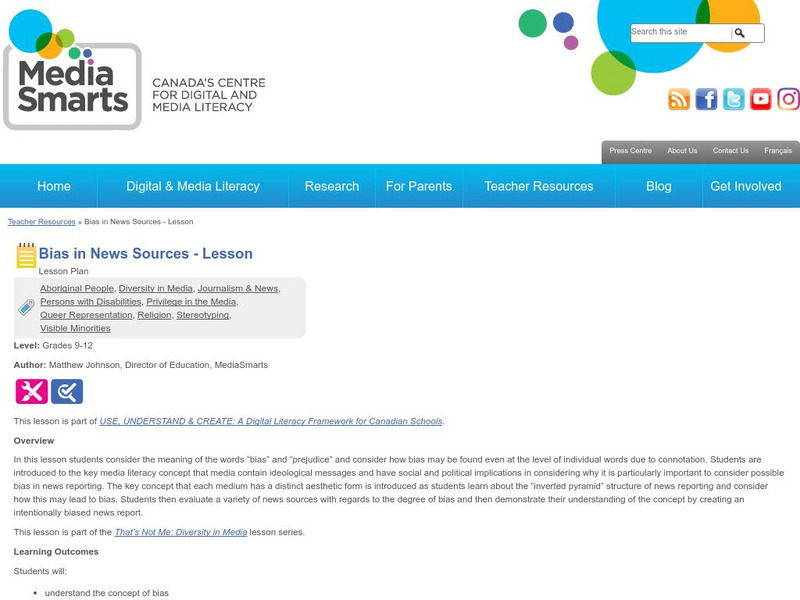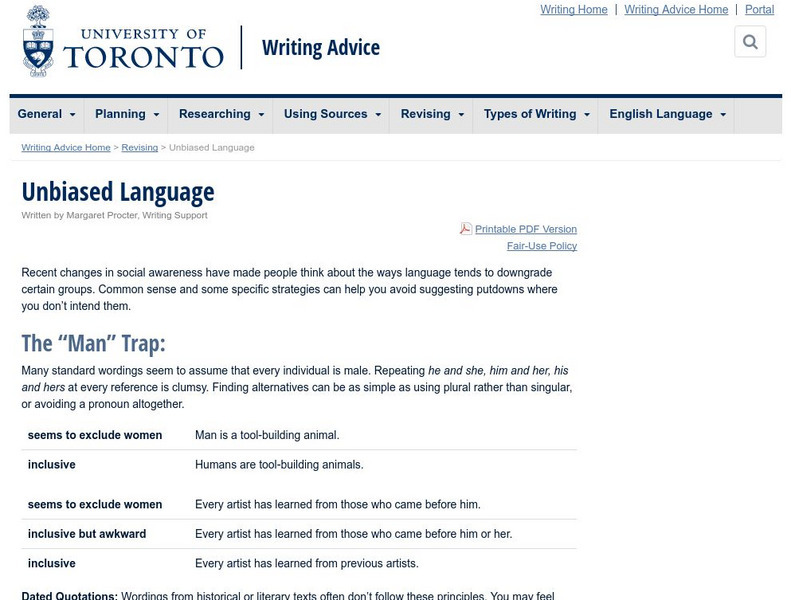Hi, what do you want to do?
Media Smarts
The Media Awareness Network: Bias
Slant, or bias, can be found in virtually every news outlet. Use this online lesson plan to help students understand how word choices and other factors can intentionally or unintentionally affect the audience's understanding.
Other
Jerz's Literacy Weblog: Gender Neutral Language
This very readable piece uses charts, examples and brief discussions to explain ways to create gender-neutral writing and speech.
Other
O.w.l.: Avoiding Sexist Language
Article that looks at and suggests ways to avoid sexist language in writing. The premise of the article is that language must not unnecessarily identify gender.
University of Toronto (Canada)
University of Toronto: Unbiased Language
Resource acknowledges the changes in social awareness and how language is influenced by it. It presents suggestions as to how to avoid bias in writing. Some of the changes in terminology can have subtle differences in meaning. W.9-10.1d...
Louisiana Department of Education
Louisiana Doe: Louisiana Believes: English Language Arts: Grade 8: The Tell Tale Heart
Eighth graders explore the role of the narrator and point of view in a text. Students will understand how the narrative voice of a text can blur the line between fact and fiction and how a story truth is often different from but relates...
Other
Media Activist's Kit for Fairness in Reporting
This site offers the whole package about bias in reporting: what it is, how to identify the source, how to complain about it and be heard, and what to do if all else fails. The site offers an extensive reading list along with detailed...
Other
Learning for Justice
A website aimed at teachers, parents, and students on ways to combat hateful words and actions. Teaching kids about tolerance is part of many curriculum units across many grades; this site has separate sections tailored to grade specific...








